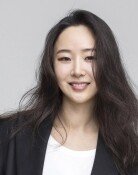Universities Fall 13 Percent Short of Admission Quotas
Universities Fall 13 Percent Short of Admission Quotas
Posted April. 10, 2005 23:19,
We have to take students away from our rival University, even if it means that we have to lie that our University has a good record of employment or attract students by saying that our University provides more scholarships, said a professor of S University.
I only talked about the crisis of universities, but now I personally feel that a tsunami has come around, said a professor of D University.
Officials of universities agreed that a warlike age has arrived in which a university with no competitiveness has no choice but to fall behind.
Universities that finished their 2005 recruitment and selection procedures reported their information on the academic year, such as, recruitment rate, to the Korean Council University Education (KCUE) and the Korean Council for College Education (KCCE).
With the Ministry of Education and Human Resources Development proceeding with the plan to restructure universities, universities remain at a heightened level of tension, ahead of the public disclosure of university information, with their enormous rate of shortages in the number of students.
By How Much Are Universities Short of Their Entrance Quotas?-
According to research on the recruitment rate of the 202 universities and 158 colleges nationwide, the universities lack 40,951 students and colleges lack 47,083 students of their total admissions quotas, which amount to 88,034 students, or a 13.2 percent of the quota.
These numbers mean that only 579,060 students actually registered for university, while universities recruited 667,094 applicants for admission, including the number of students who failed to get in last year.
In the case of a university (four year system), according to regions, Honam and Gyeongbuk area had the highest shortage rate of students where the intake quota of universities outnumbered the number of high school graduates.
After the results in the Honam and Gyeongbuk area, Jeonnam topped the list with 33.4 percent (5,134 students), followed by Jeonbuks 21.3 percent (4,492), Gwangjus 20.1 percent (3,797), Jejus 19.0 percent (661), Gangwons 17.1 percent (3,552), Gyeongbuks 14.4 percent (5,002), Chungbuks 13.8 percent (2,834), Daejeona 13.5 percent (2,899), and Gyeonnams 12.8 percent (2,659).
Meanwhile, the metropolitan area, including Seoul (1.3 percent, or 1,102), Gyeonggi (4.7 percent, or 1,899), and Incheon (2.3 percent, or 160), and bigger cities, such as, Daegu (2.9 percent or 327), and Busan (5.3 percent, or 1,930) registered a mere one to five shortage rate of students.
Situations In Which Professors Are Fired-
The shortage in the total quotas started in Gyeongbuk and Jeolla Province, and spread up north, to universities in Cheonan, Chungnam Province, which strained universities in the metropolitan area.
A college in Chungbuk Province has so far recorded over 90 percent of its recruitment rate, but was in the range of 70 percent this year. An official of this college said that although they tried to select additional number of students by distributing leaflets around Gangnam area, they failed to do so.
D University in Gangwon Province only had a 19 percent recruitment rate, attracting only 173 students compared to its quota of 909.
The lack of applicants may be a result of the universitys designated trustee who was put into place after illegal actives, including embezzlement of university funds and hiring relatives, were discovered.
C University in Jeolla Province explained that it recorded a 77 percent recruitment rate after reducing its intake quota by 350 candidates from that of last year. However the universitys actual recruitment rate was merely 67.7 percent.
A professor of another university noted that unconditionally admitting students was a prime goal, and that inquiring into student CSAT records or school records was all a luxury to the university.
Another professor further frankly stated that if a student registers with a university after canceling his or her registration with a rival university, the second university will provide the student with a 500,000 won scholarship or entirely exempt a students entrance fee and tuition fee for the first semester.
In contrast to the heightened price of being a student, the stature of a professor has dropped, which justifies the words: Dear student, Mr. Staff, Guy professor x, regarding the ranking hierarchy in a university.
Some universities shut down departments that dont attract many students or make a professor change his or her major, or they fire professors.
D University in Busan, Gyeongnam Province, received applications for honorary (early) retirement from professors, regardless of position.
Three professors changed into seven-year contract professors. In this system, an honorary professor takes 70 percent of his or her original salary for five years during the remaining period, and receives only 25 percent after five years.
In-Chul Lee inchul@donga.com
Headline News
- Med professors announce intention to leave hospitals starting Thursday
- Bridge honoring Sgt. Moon Jae-sik unveiled in Pennsylvania
- Chief of Staff Chung tells presidential secretaries to stay away from politics
- US FTC bans noncompete agreements
- N. Korea launches cyberattacks on S. Korea's defense companies







